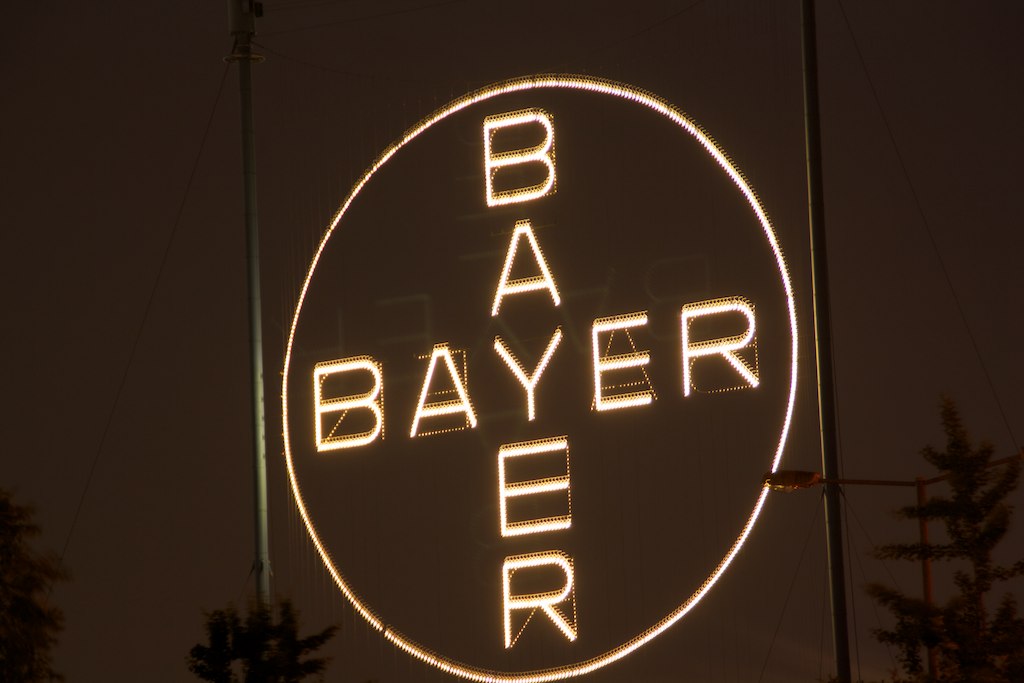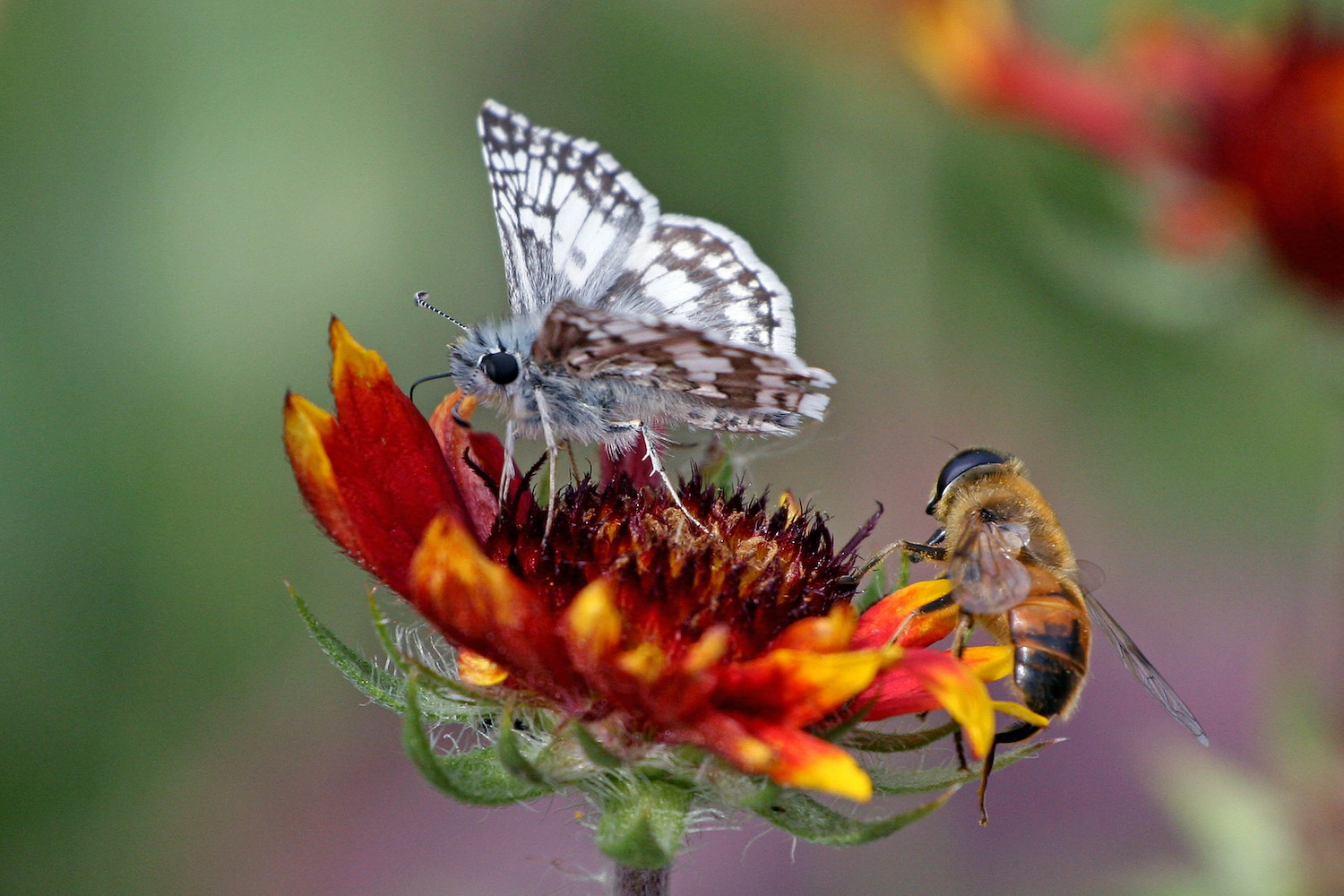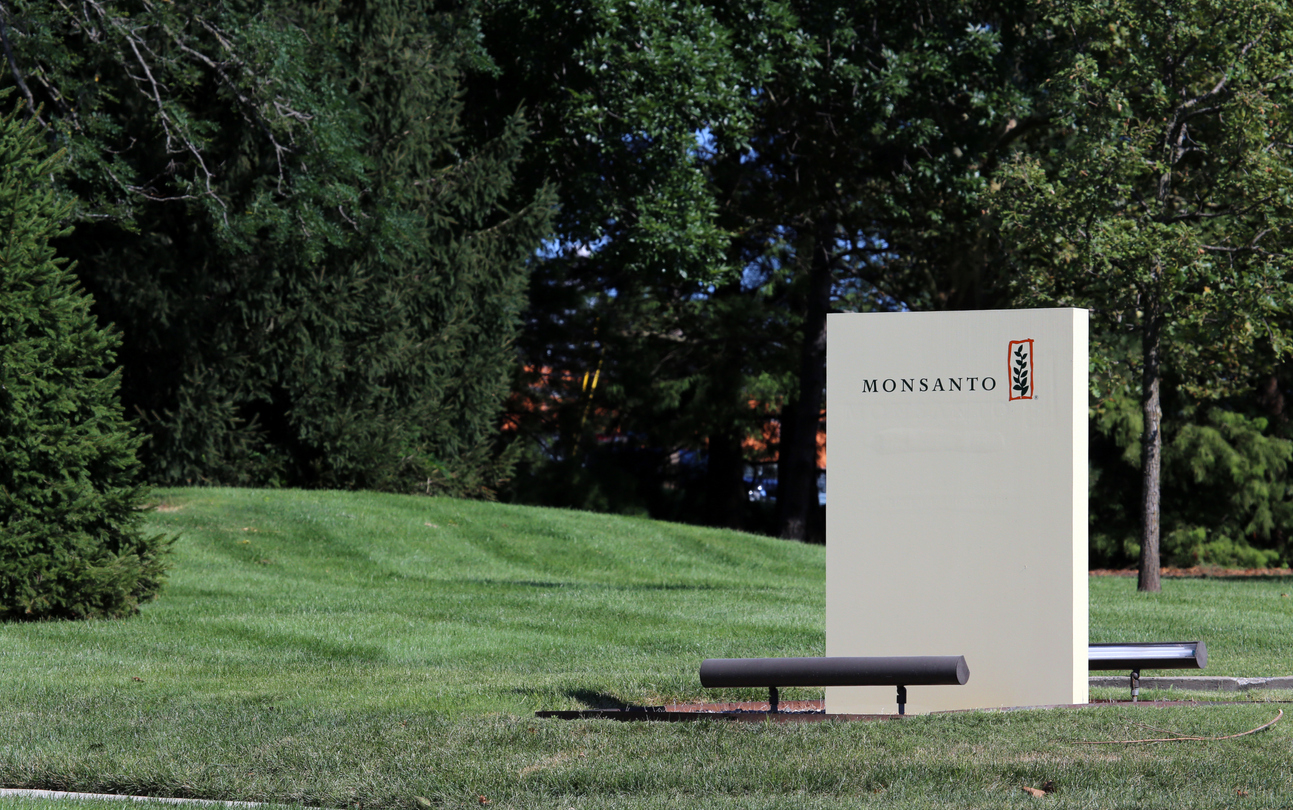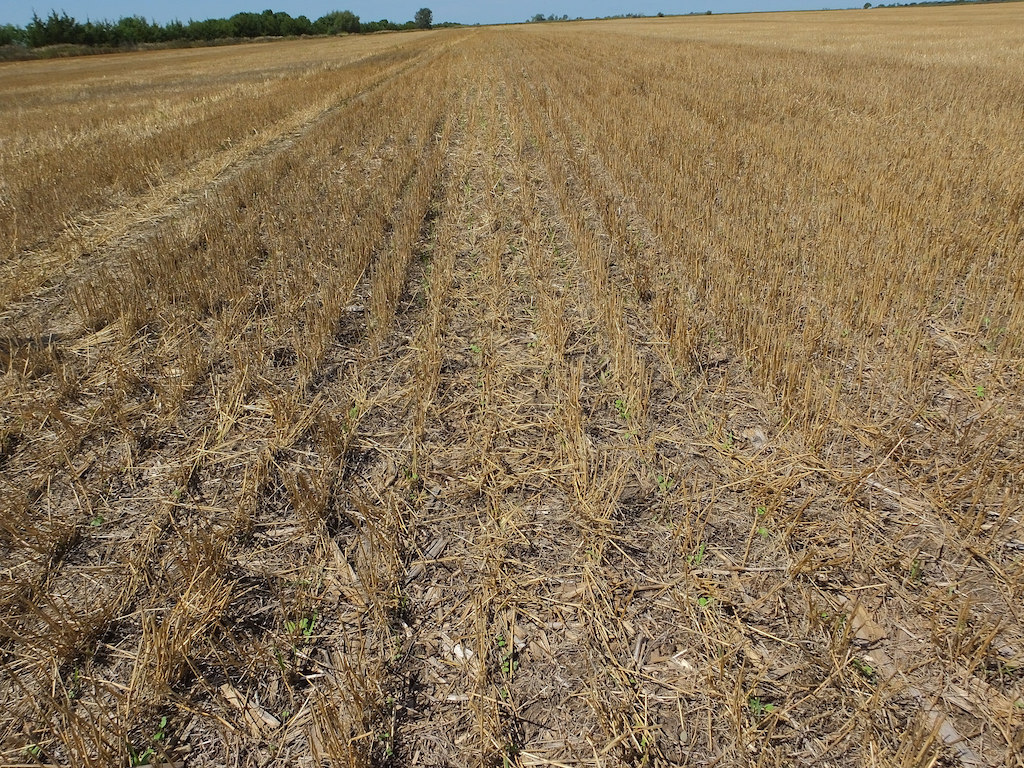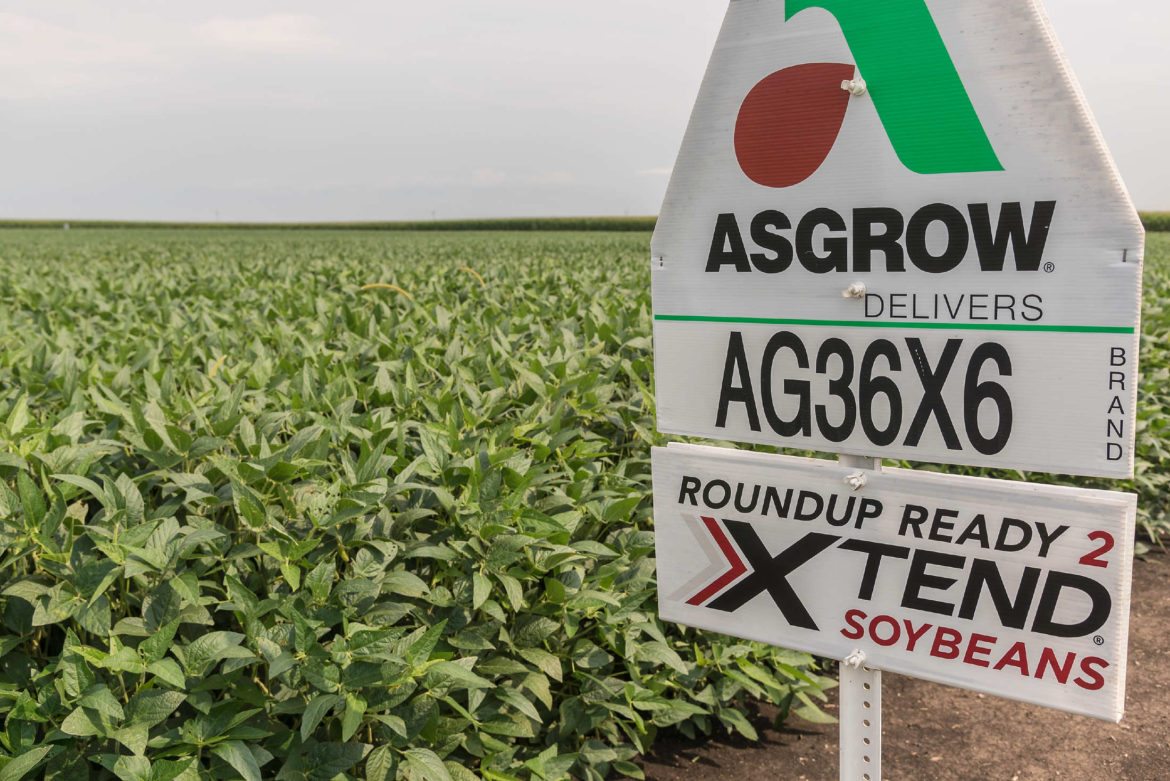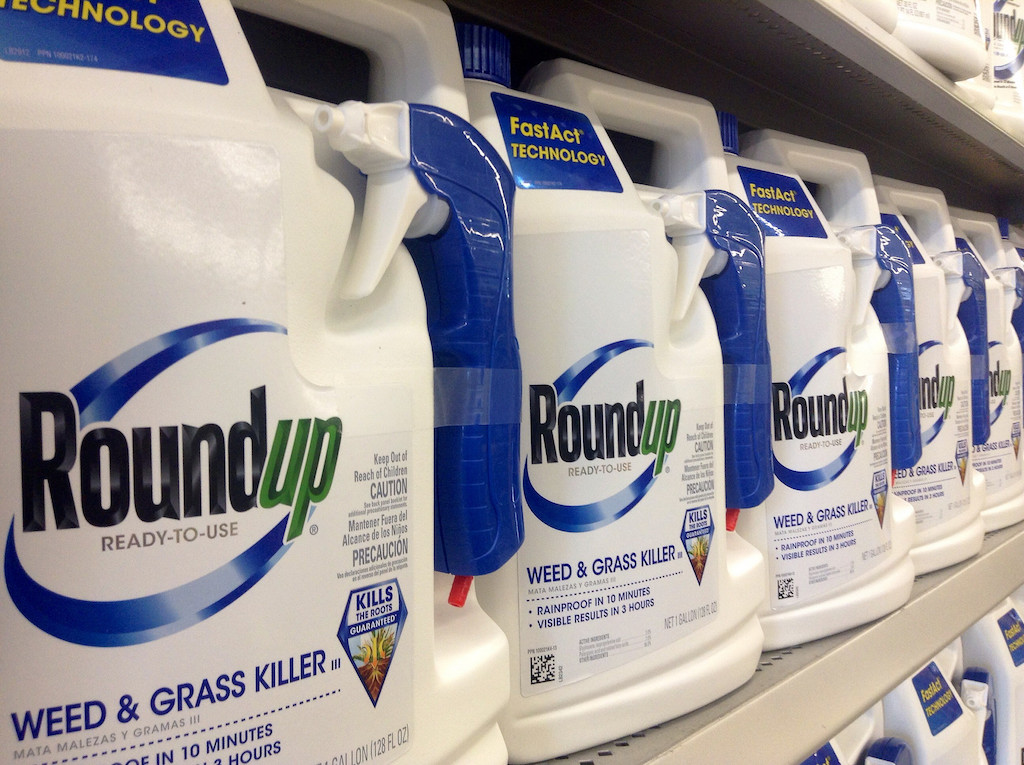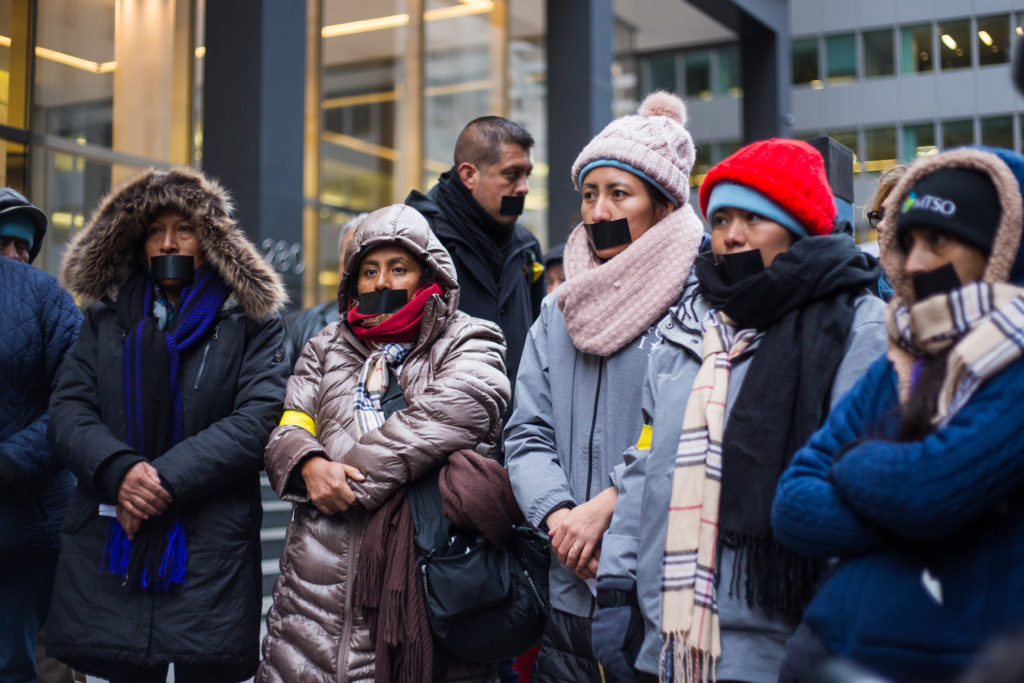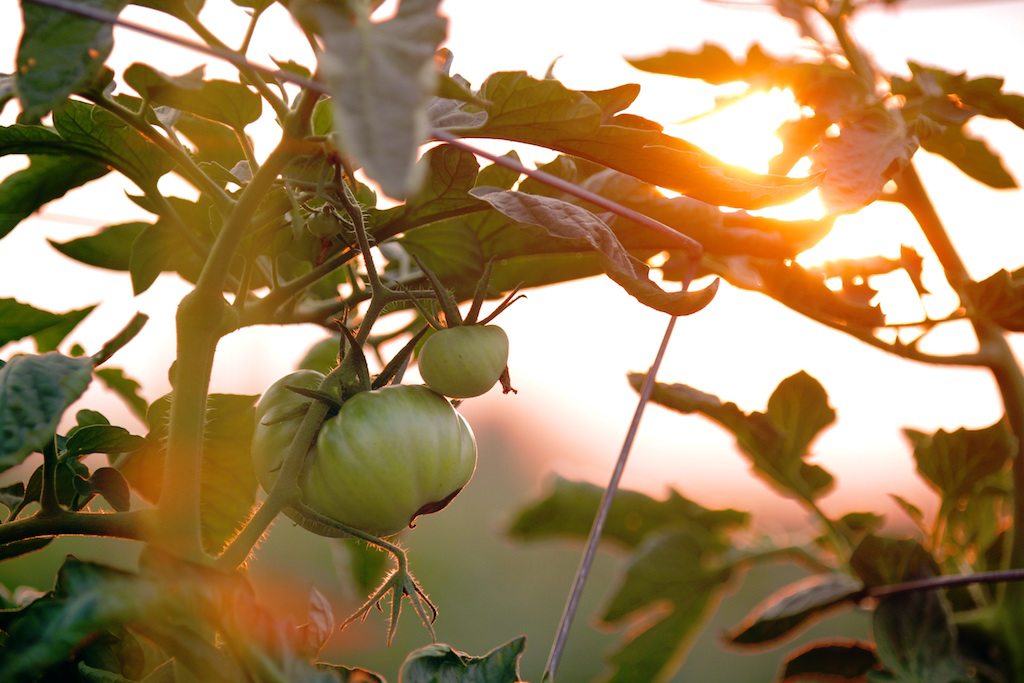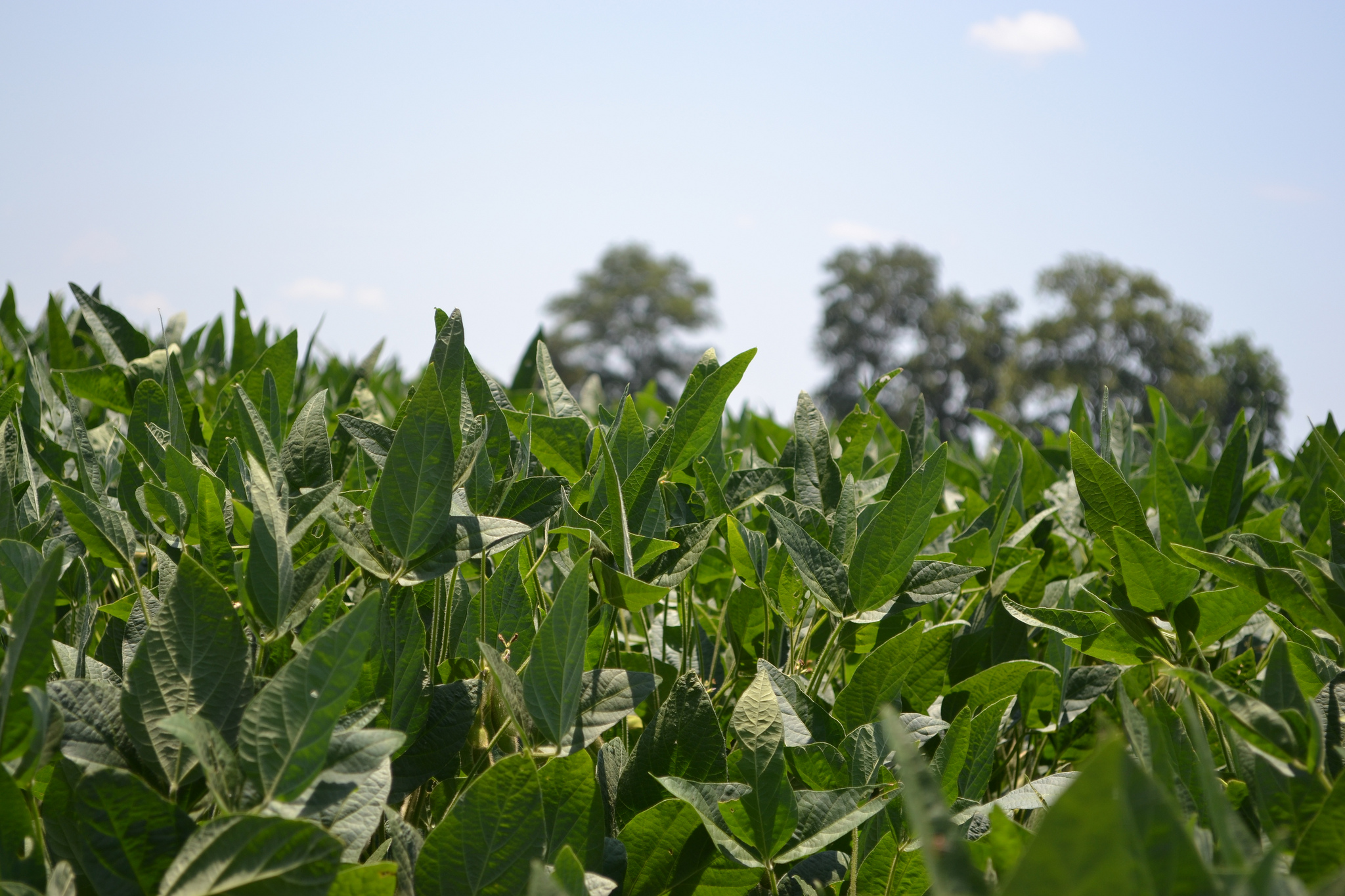
Flickr / United Soybean Board
Last Friday, agrochemical company Monsanto filed a lawsuit in Arkansas’ Pulaski County Circuit Court, suing state regulators for blocking its version of the potent herbicide dicamba for the 2018 growing season. It’s the latest legal tangle in a series of intensifying skirmishes over the product, as its use continues to increase some crop yields—but also run afoul of regulators, divide farmers, and even turn neighbors against each other.
“The Plant Board’s arbitrary approach also has deprived, and if left unchecked will continue to deprive, Arkansas farmers of the best weed management tools available,” Monsanto alleged in its filing.
The company is talking about its latest product, XtendiMax—which might sound like a male vitality supplement or a nu-metal band, but is really a proprietary “low-volatility” dicamba that Monsanto maintains is highly effective and reasonably safe. The company has a point: Many farmers feel they need to use dicamba during the upcoming growing season, and would agree that the ban deprives them of a critical tool.
Why? The primary reason is that the herbicide that has long been Monsanto’s flagship product—glyphosate, marketed under the brand name Roundup—has started to lose effectiveness. For years, farmers could plant Roundup-Ready crops—corn and soy genetically engineered to tolerate glyphosate—and the chemical would kill everything in the fields (weeds, namely) that wasn’t modified to withstand it. But that’s no longer true. A new class of glyphosate-tolerant superweeds has evolved, including palmer amaranth—a weed that, according to Successful Farming, can grow to be ten feet tall, with a thick stalk the width of a baseball bat.
“The weeds have become so difficult to manage that some farmers don’t see any way that they control them without this,” says Bob Hartzler, a weed specialist at Iowa State University. “If you feel that way then you’re probably willing to take on some higher-level risk.”
Farmers needing stronger weed control have turned to dicamba, along with Monsanto’s new soybeans that have been genetically engineered to tolerate it. Unlike glyphosate, though, dicamba comes with a major liability: it tends to combust in conditions of high heat. That’s why no one has really used it, even though the chemical has been around for years—until Monsanto’s low-volatility version promised to change that.
But some evidence suggests that XtendiMax may be more unstable than Monsanto acknowledges. There have been widespread reports of crop damage—as many as 1,000 in Arkansas this year so far, according to the Associated Press. Conventional (non-modified) soybeans are extremely sensitive to dicamba, and farmers are alleging that their fields are being damaged by their neighbors’ applications.
“If your neighbor is planting Xtend soybeans, the evidence suggest there’s pretty good potential your beans might get damaged. One option is just to plant Xtend beans to eliminate that risk,” Hartlzer says. “[But] a lot of growers don’t want to get locked in to buying this seed, and they’re concerned if they don’t buy these seeds their beans are going to get damaged. They just don’t like the thought of being forced to use technology to protect themselves from what their neighbors are doing.”
For its part, Monsanto says that any incidents must be a result of human error, not the chemical itself. It claims Arkansas is ignoring the extensive research it supplied to the state, testing that it says demonstrates XtendiMax’s safety. In an article on the the company’s website, Monsanto North American crop protection lead Ty Witten, Ph.D. called the ban “ill informed” and “unnecessary.”
“Drastic measures that will deprive all Arkansas farmers of this important technology are unwarranted, misguided, and not supported by the facts or the body of scientific data,” Witten wrote.
But Hartzler disagrees with this assessment, pointing out that all but two of the studies submitted to the Arkansas Plant Board were largely based on Humidome and Hoop House tests—lab and greenhouse research he says can’t possibly replicate dicamba’s effects in the real world.
“I think most weed scientists contend that it’s very difficult to extrapolate from these Humidomes to treating 100-acre fields,” he says.
The human error argument is made more shoddy by XtendiMax’s complex, 4,550-word instruction label—a set of directives so elaborate that critics say even well-meaning applicators would have trouble following the rules. That may be part of why, according to an investigation by Progressive Farmer, some insurers are already refusing to cover dicamba damage.
“If an applicator is making an application of an herbicide and unknowingly allows it to move off target and it causes property damage to a third party, that most likely will be covered,” Jason Berkland, an underwriting director with Nationwide Mutual Insurance Company, said. But Progressive Farmer found that insurers are denying claims under the rationale that fault lies not with farmers but with Monsanto’s product itself.
Monsanto denies this, and is prepared to argue—in court—that the Arkansas Plant Board has ignored key evidence, and is overstepping its authority, with the ban.
“This is about growers,” Monsanto tells New Food Economy, in a statement. “As a company, we are committed to putting the best tools in the hands of growers to control weeds. Growers in 33 other states are having an outstanding experience with XtendiMax. Growers in Arkansas deserve the same opportunity.”


